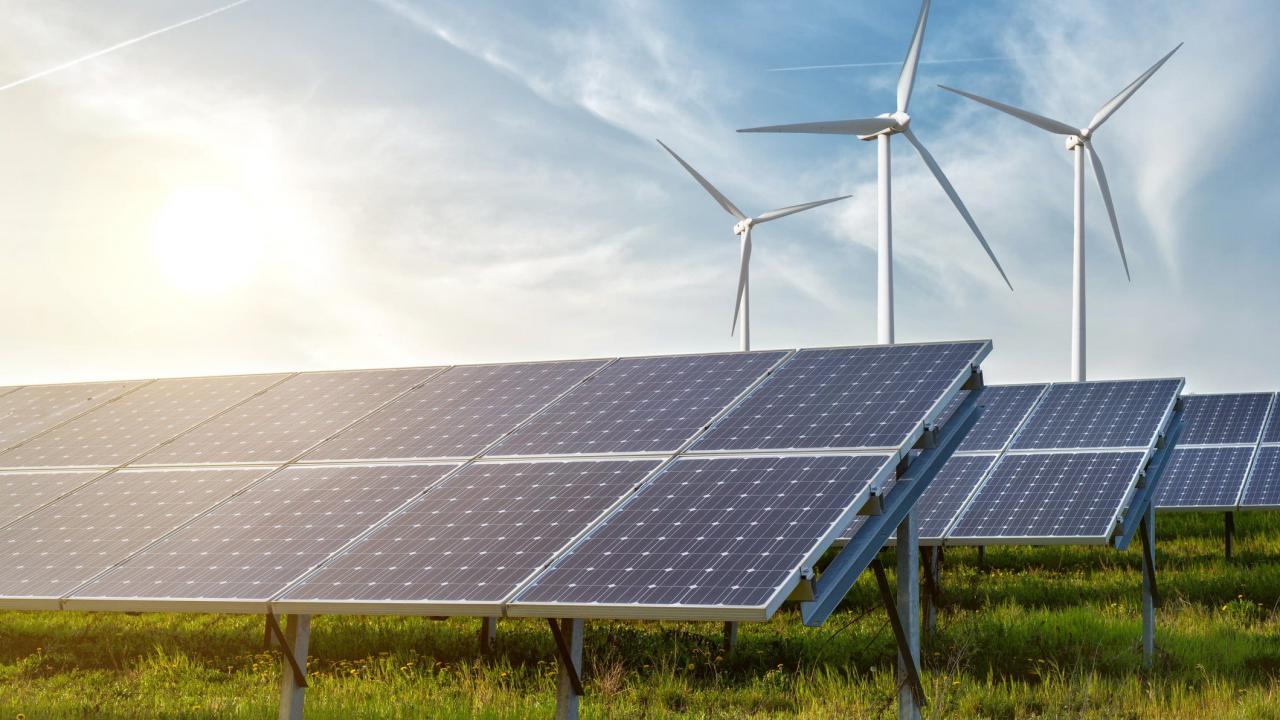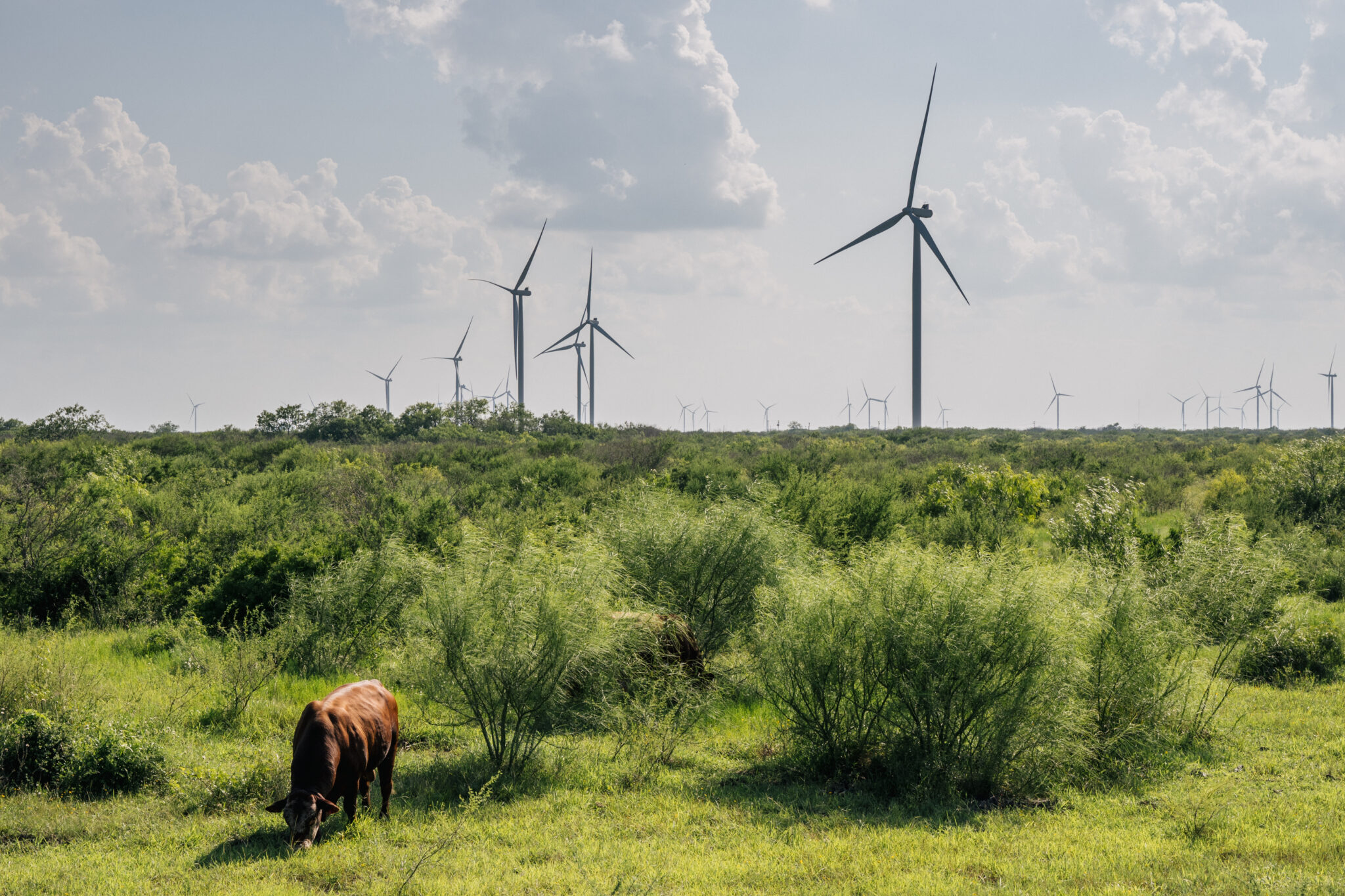1. Renewable energy is all around us
Energy is at the heart of the climate challenge – and the key to the solution.
Large amounts of greenhouse gases cover the Earth and trap the sun’s heat generated through energy production, by burning fossil fuels to generate electricity and heat.
Fossil fuels, such as coal, oil and gas, are by far the largest cause of global climate change, accounting for more than 75% of global greenhouse gas emissions and almost 90% of the total. carbon dioxide emissions.
The science is clear: to avoid the worst effects of climate change, emissions need to be nearly halved by 2030 and reach zero by 2050.
To achieve this, we need to end our dependence on fossil fuels and invest in clean, accessible, affordable, sustainable and reliable alternative energy sources.
Renewable energy sources – readily available all around us, powered by the sun, wind, water, waste and heat from the Earth – are supplemented by nature and emit little or no greenhouse gas emissions. glass or contaminants into the air.
Fossil fuels still account for more than 80% of global energy production, but cleaner sources of energy are gaining ground. About 29 percent of electricity today comes from renewable sources.
Here are five reasons why accelerating the transition to clean energy is the path to a healthy, livable planet today and for generations to come.

About 80 percent of the global population lives in countries that are net importers of fossil fuels — that’s about 6 billion people who depend on fossil fuels from other countries, making them vulnerable to impacts of climate change. shock and geopolitical crisis.
In contrast, renewable energy sources are available in all countries and their potential remains untapped. The International Renewable Energy Agency (IRENA) estimates that 90% of the world’s electricity can and will come from renewables by 2050.
Renewable energy offers a solution out of dependence on imports, allowing countries to diversify their economies and insulate them from the unpredictable price fluctuations of fossil fuels, while promoting comprehensive economic growth, create new jobs and reduce poverty.
2. Renewable energy is cheaper
Renewable energy is actually the cheapest energy option in most parts of the world today. Prices for renewable energy technologies are falling rapidly. The cost of electricity from solar has fallen by 85% between 2010 and 2020. The cost of onshore and offshore wind has fallen by 56% and 48%, respectively.
Falling prices make renewables more attractive everywhere – including in low- and middle-income countries, where most of the additional demand for new electricity will come from. With costs falling, there is a real chance that much of the new electricity supply in the coming years will be powered by low-carbon sources.
Cheap electricity from renewable sources could provide 65% of the world’s total electricity supply by 2030. It could decarbonize 90% of the electricity sector by 2050, significantly cutting carbon emissions and helping climate change mitigation.
The International Energy Agency said that while the cost of solar and wind power is expected to remain higher in 2022 and 2023 than pre-pandemic levels due to higher commodity and general freight prices, but their competitiveness has actually improved due to much stronger increases in gas and coal prices, says the International Energy Agency (IEA).

3. Renewable energy is healthier
According to the World Health Organization (WHO), about 99% of people around the world breathe air that exceeds air quality limits and threatens their health, and more than 13 million deaths worldwide. each year is due to avoidable environmental causes, including air. Pollution.
Unhealthy levels of fine particulate matter and nitrogen dioxide mainly stem from the burning of fossil fuels. In 2018, air pollution from fossil fuels caused $2.9 trillion in health and economic costs, about $8 billion per day.
Therefore, switching to clean energy sources, such as wind and solar, not only helps to solve the problem of climate change but also air pollution and health.
4. Renewable energy creates jobs
Every dollar invested in renewables creates three times as many jobs as the fossil fuel industry. The IEA estimates that the transition to net zero emissions will lead to an overall increase in employment in the energy sector: while around 5 million jobs in fossil fuel production could be lost by By 2030, an estimated 14 million new jobs will be created in the clean energy sector, resulting in a net increase of 9 million jobs.
In addition, energy-related industries will need an additional 16 million workers, such as to take on new roles in the production of electric vehicles and ultra-energy efficient devices or in advanced technologies such as hydrogen. This means that a total of more than 30 million jobs could be created in clean, efficient and low-emission energy technologies by 2030.
Ensuring a fair transition, putting people’s needs and rights at the heart of the energy transition, will be paramount to ensuring no one is left behind.



